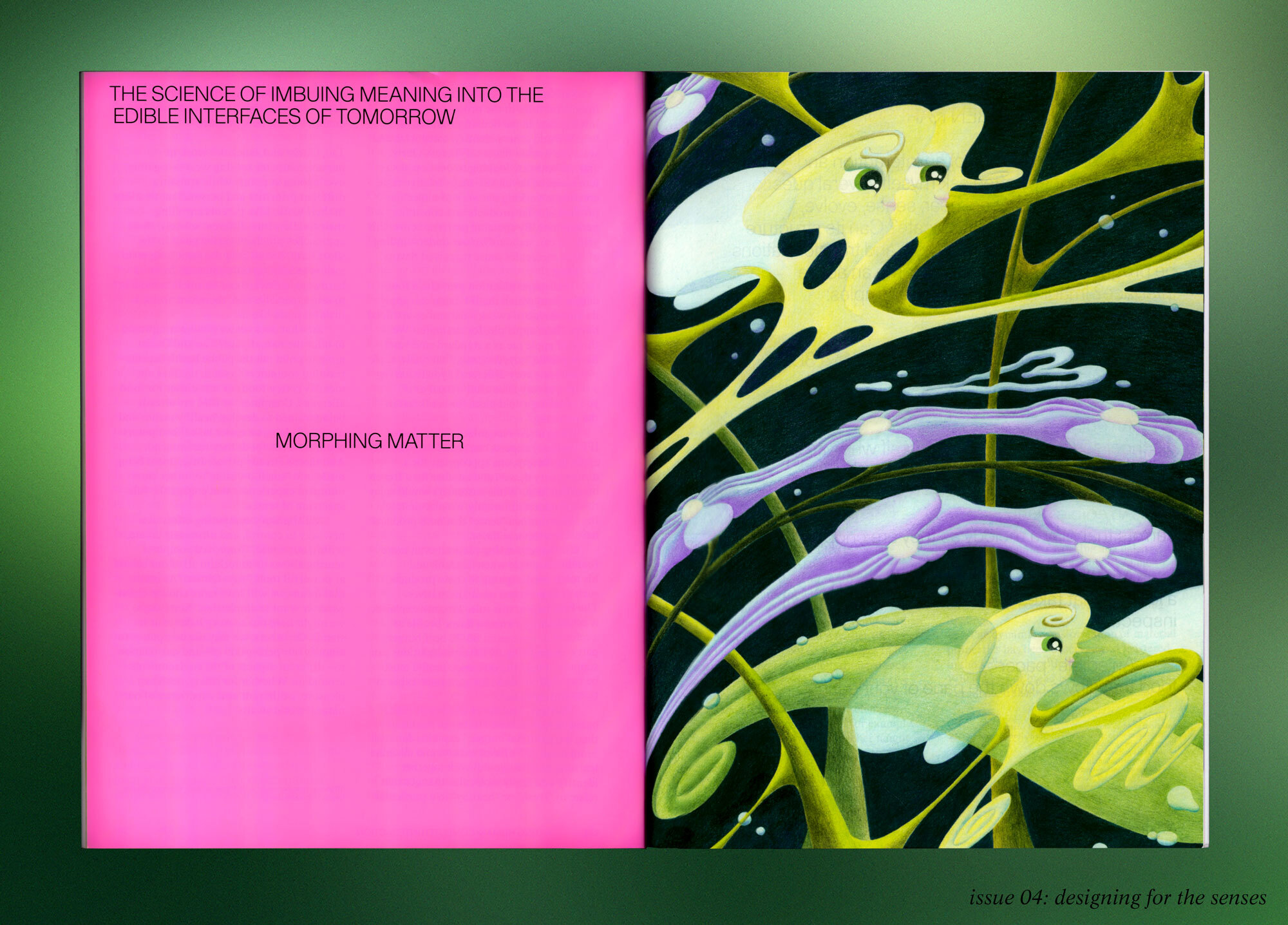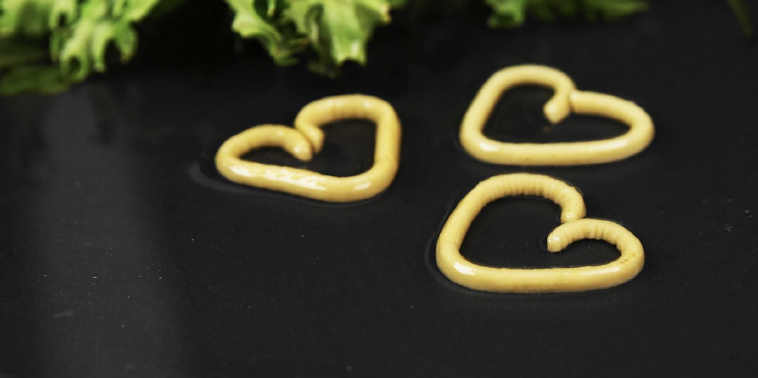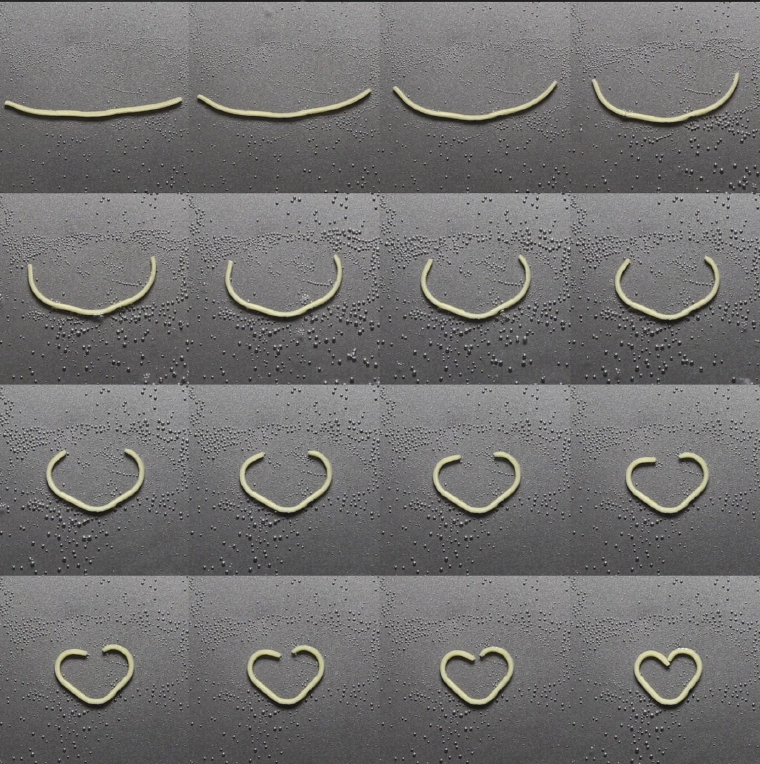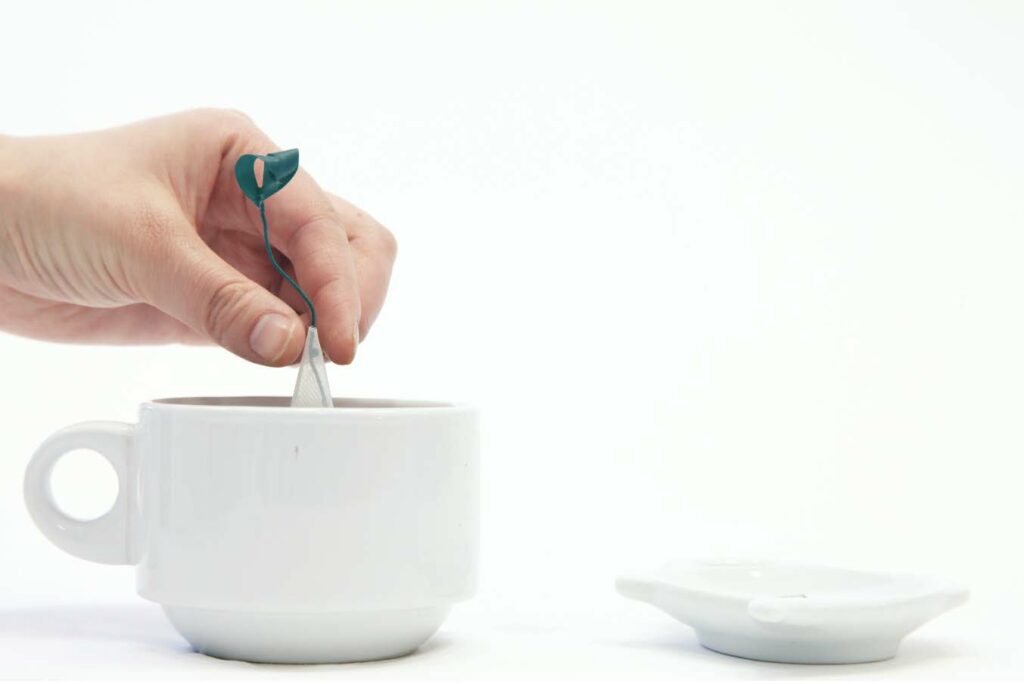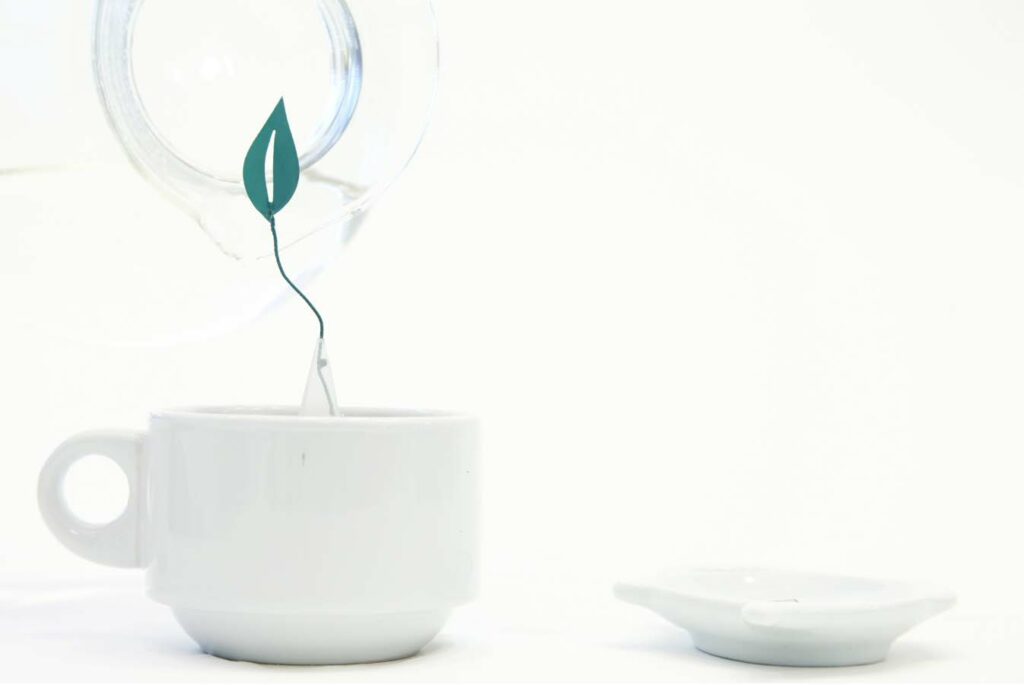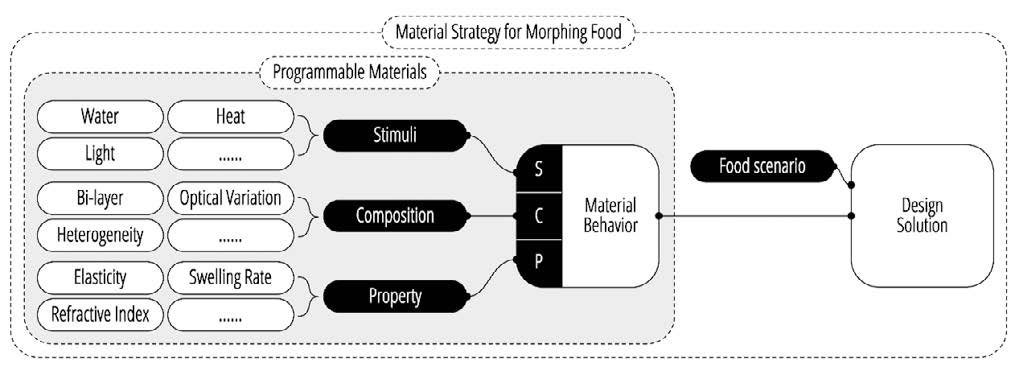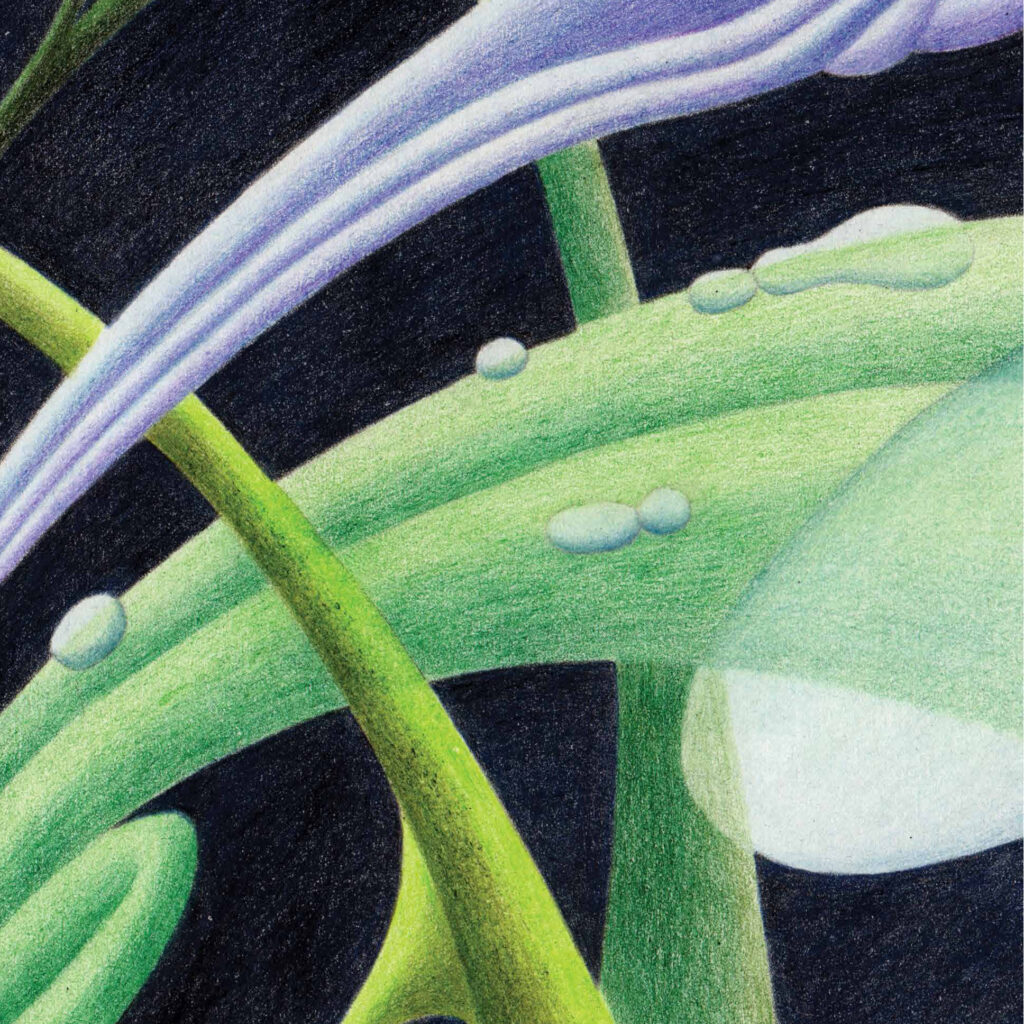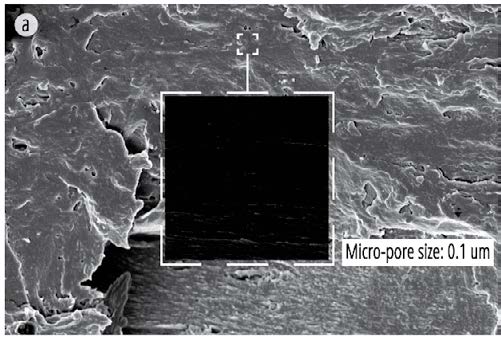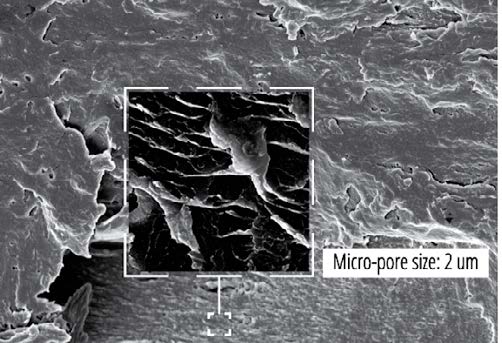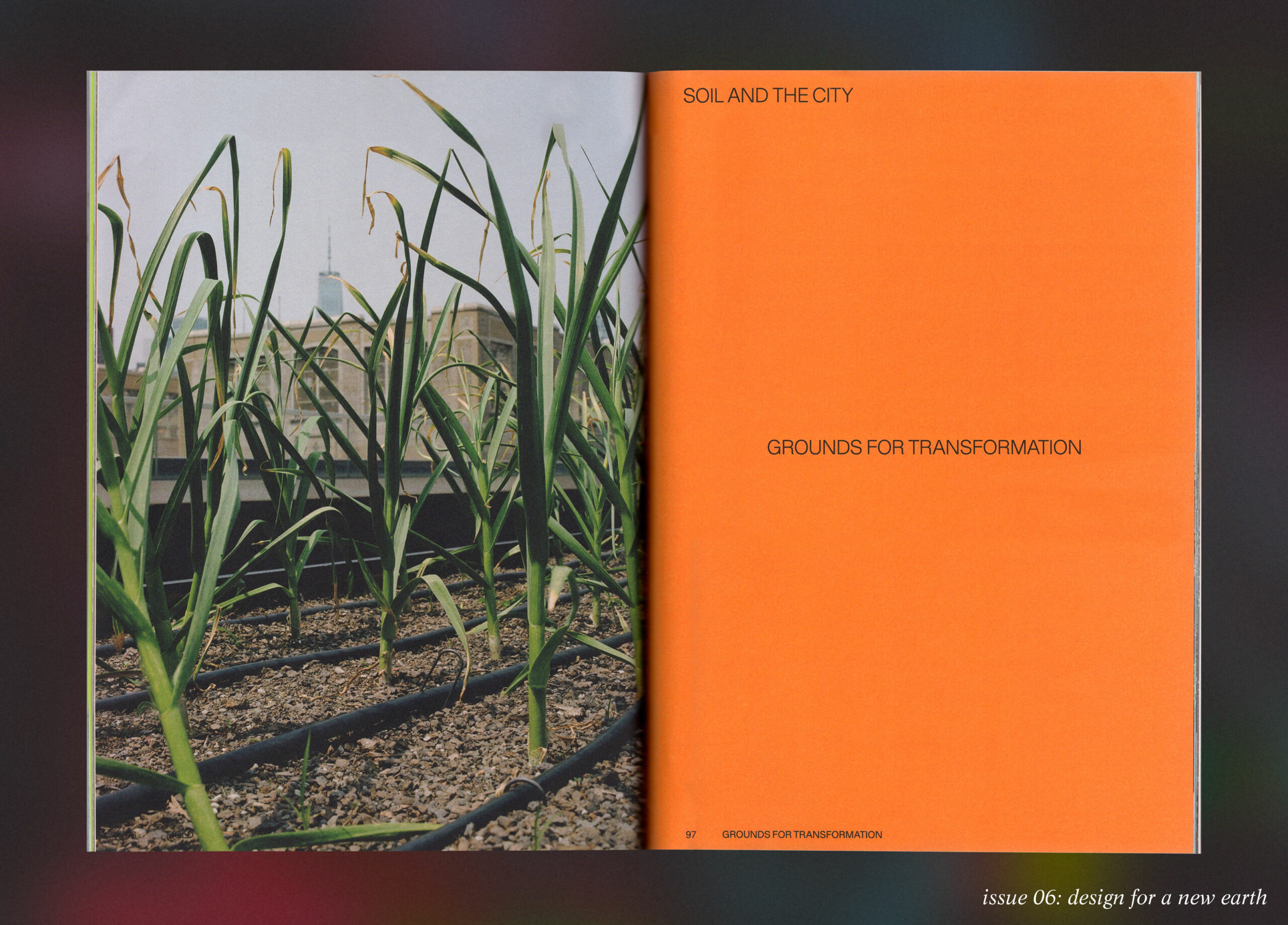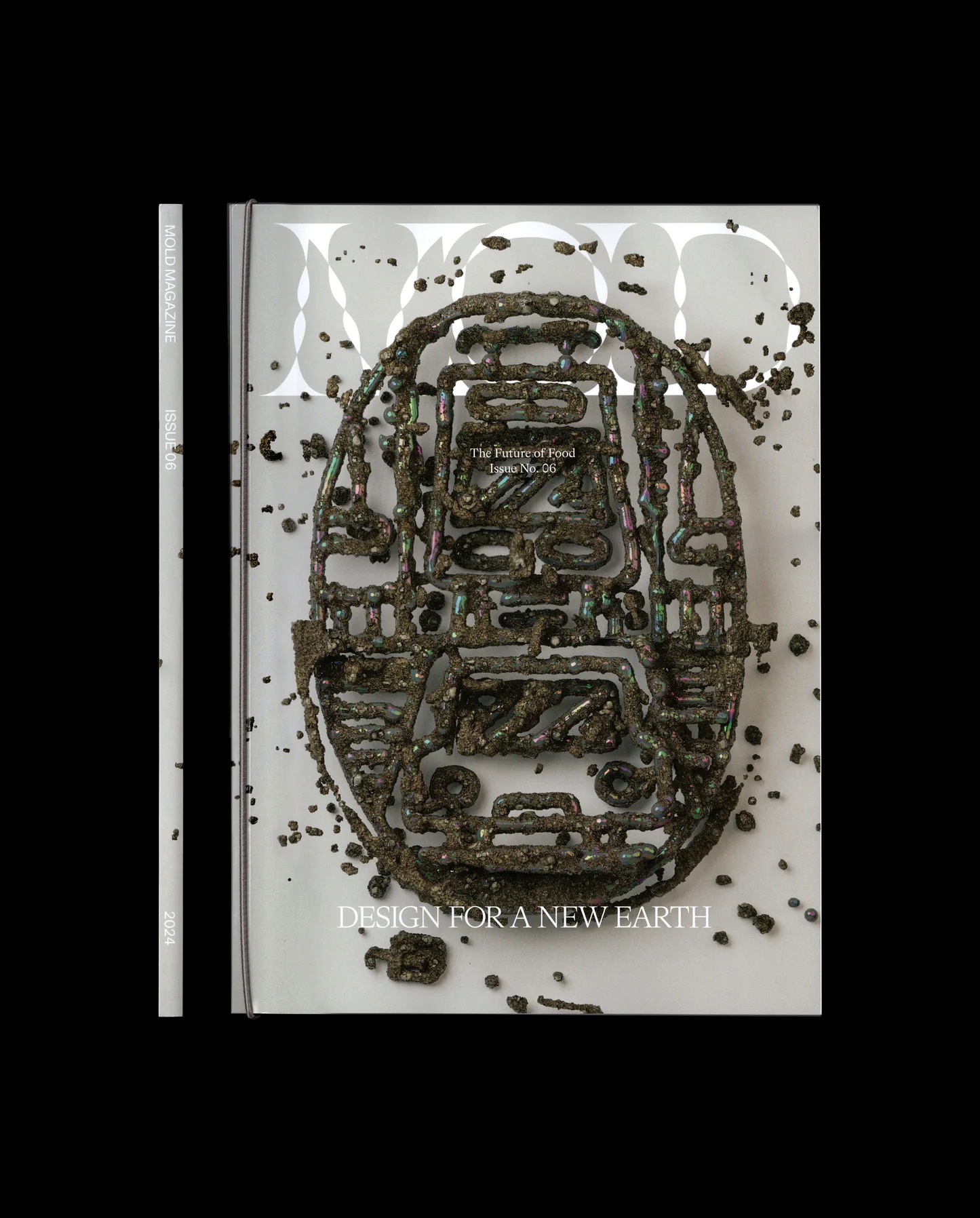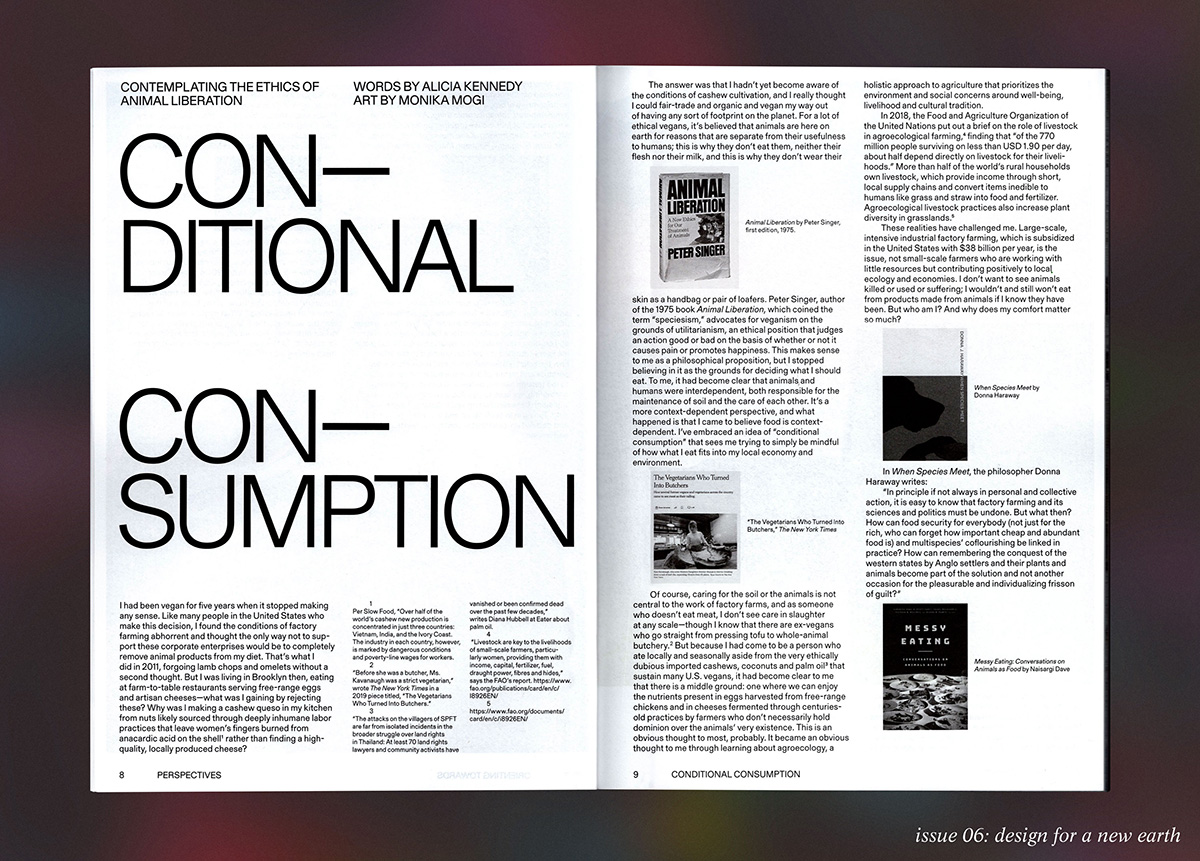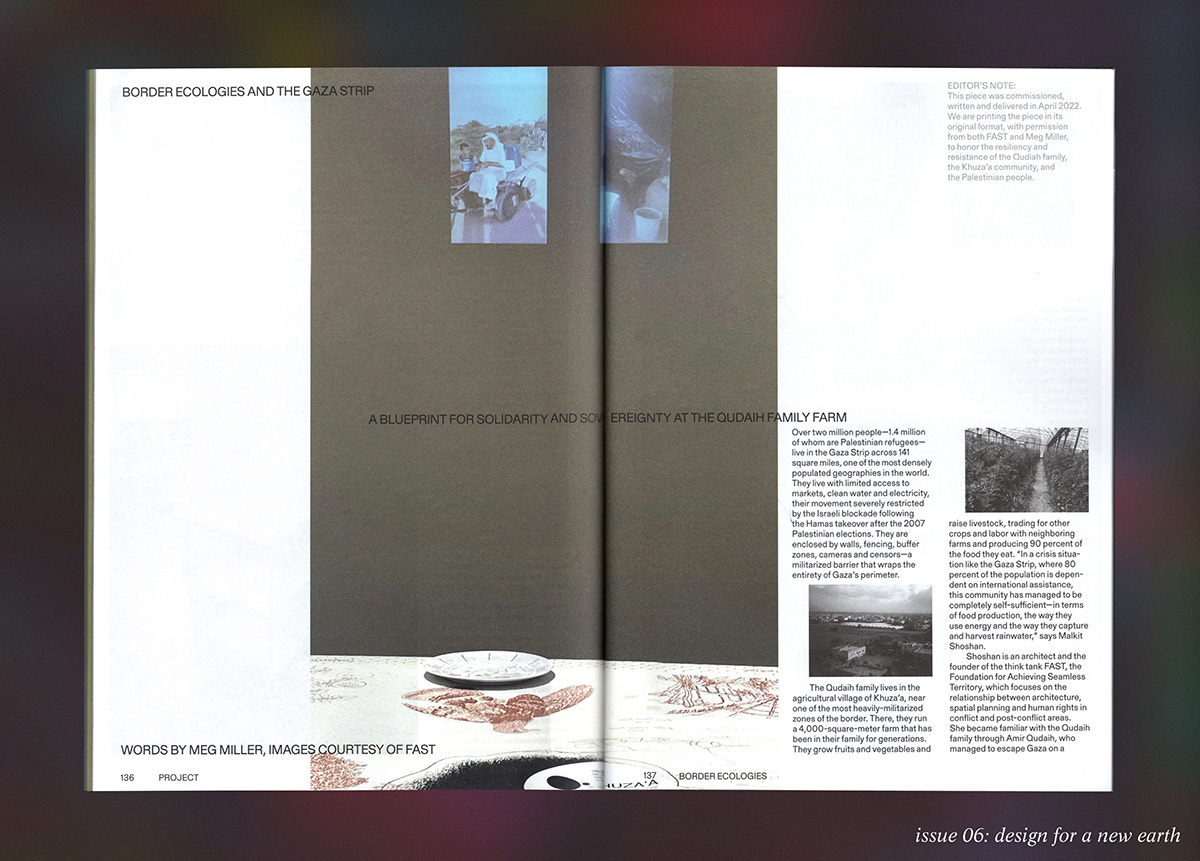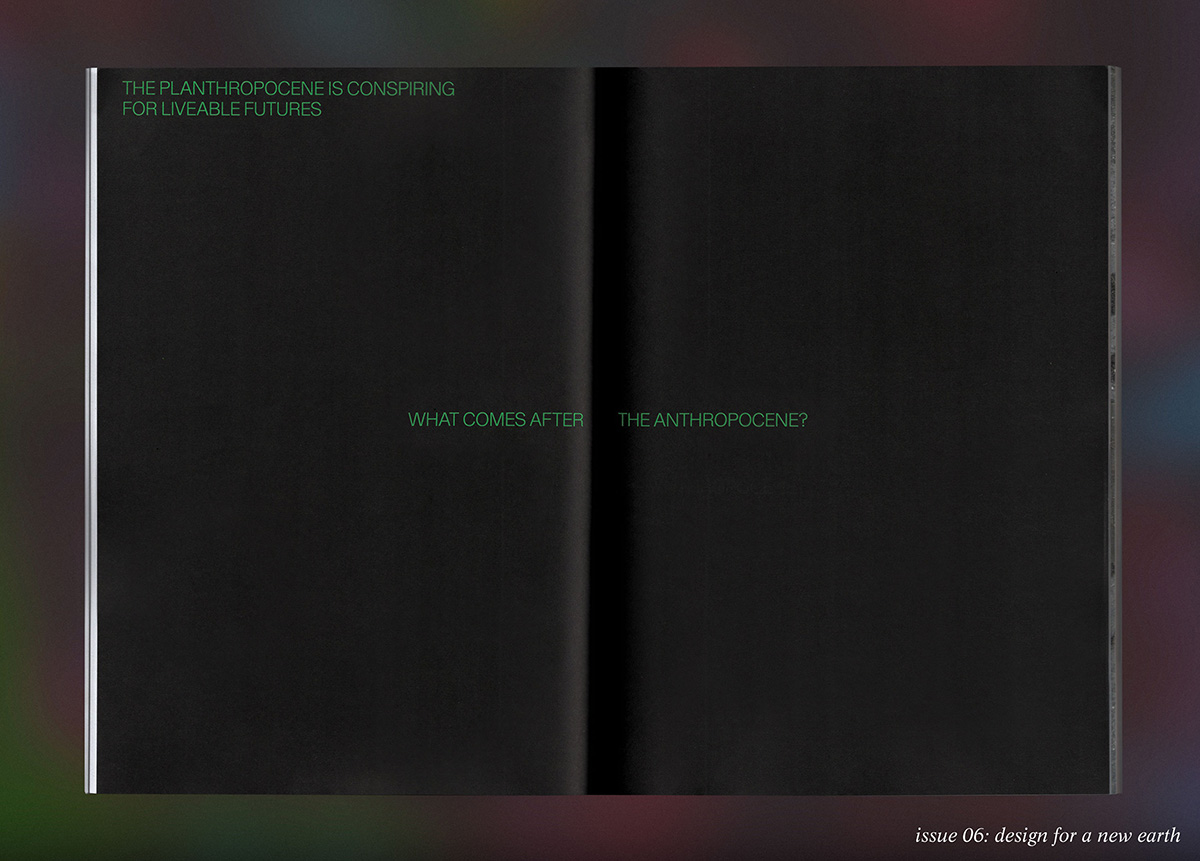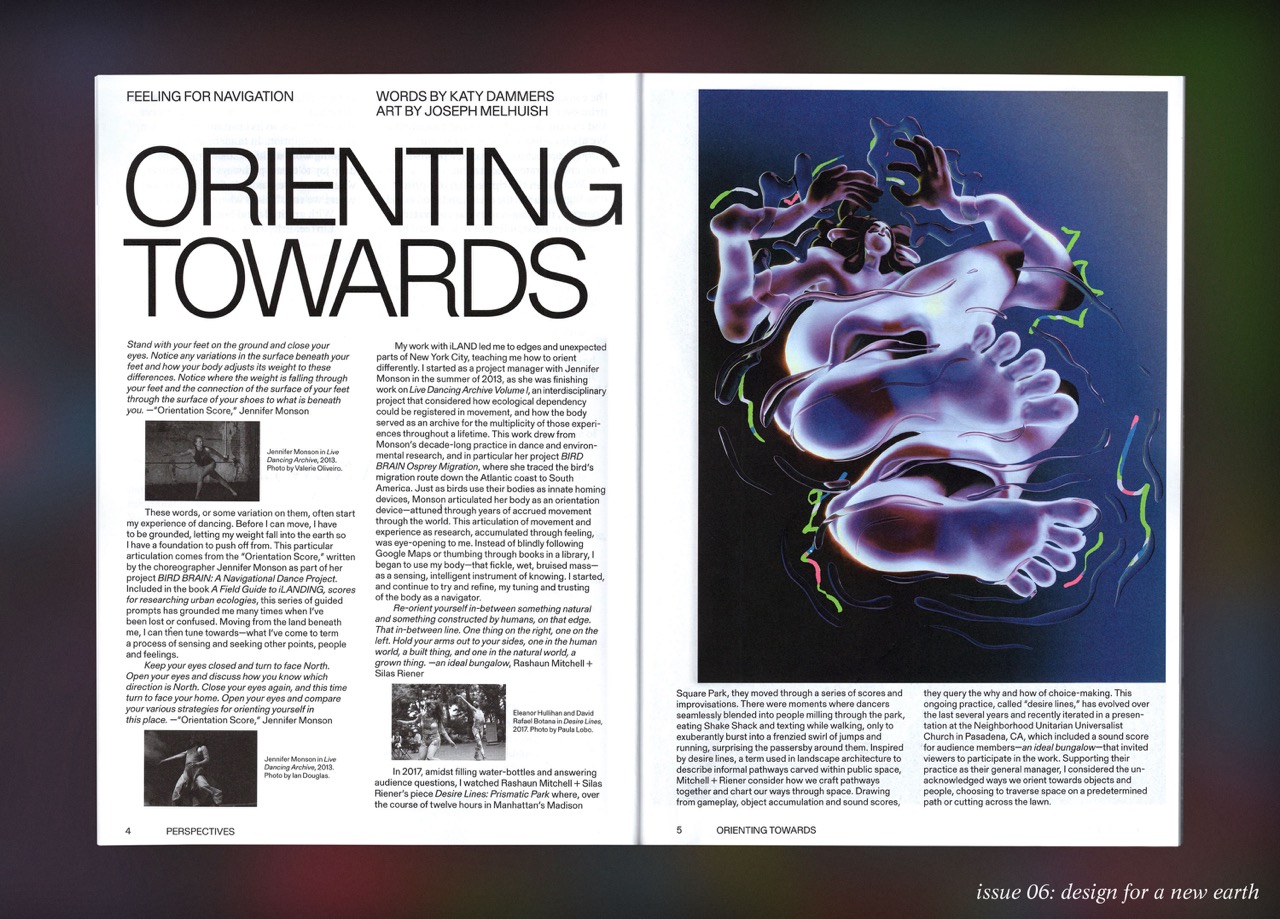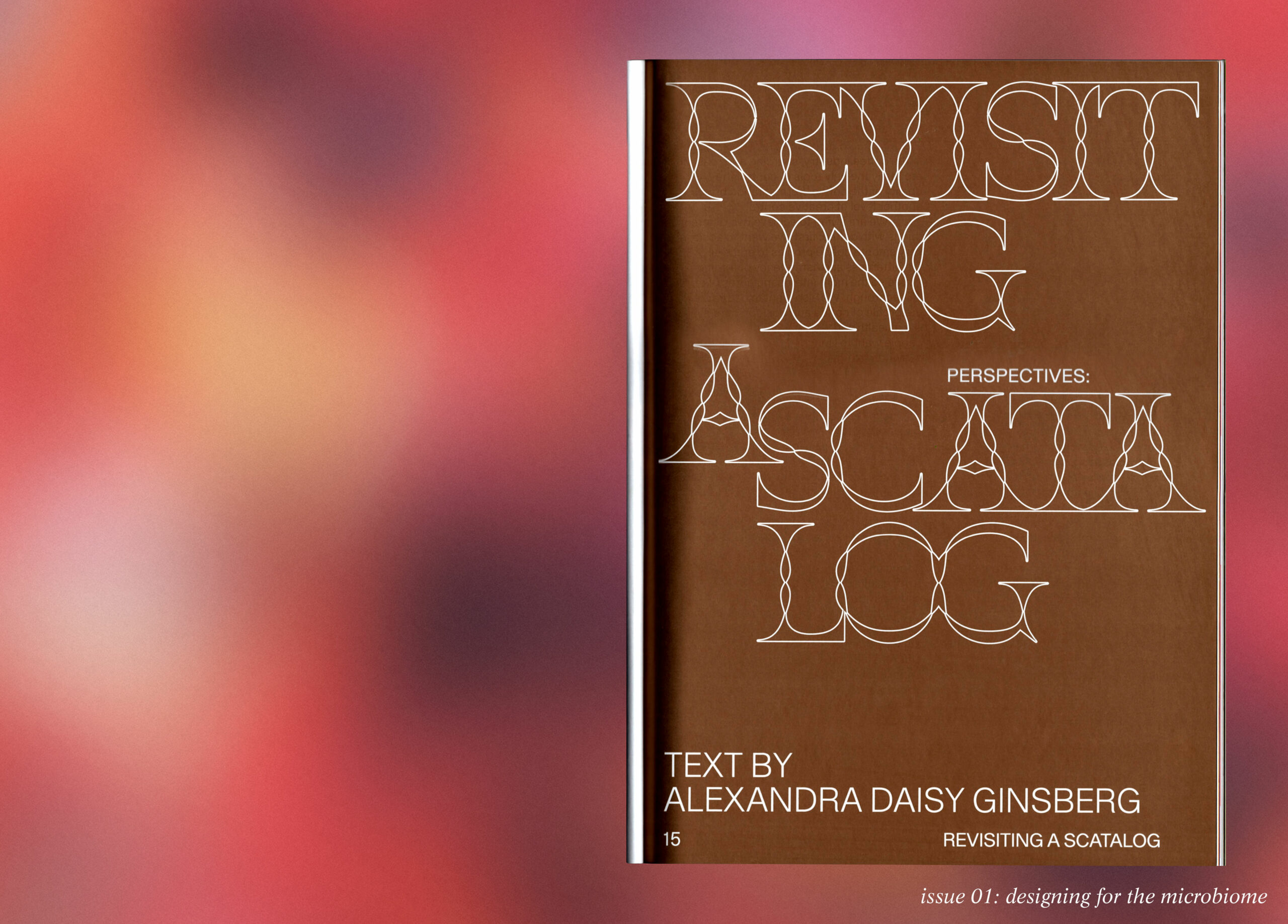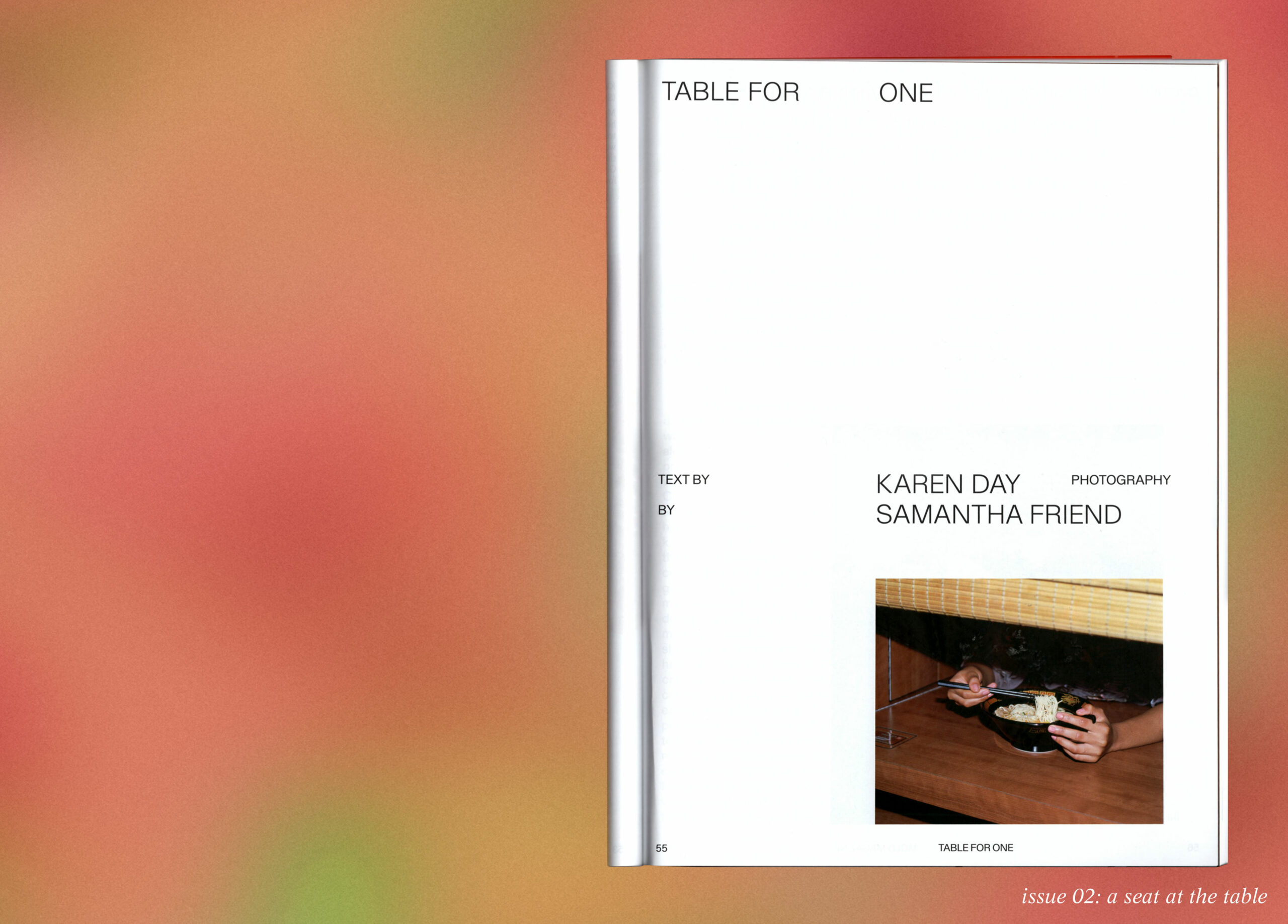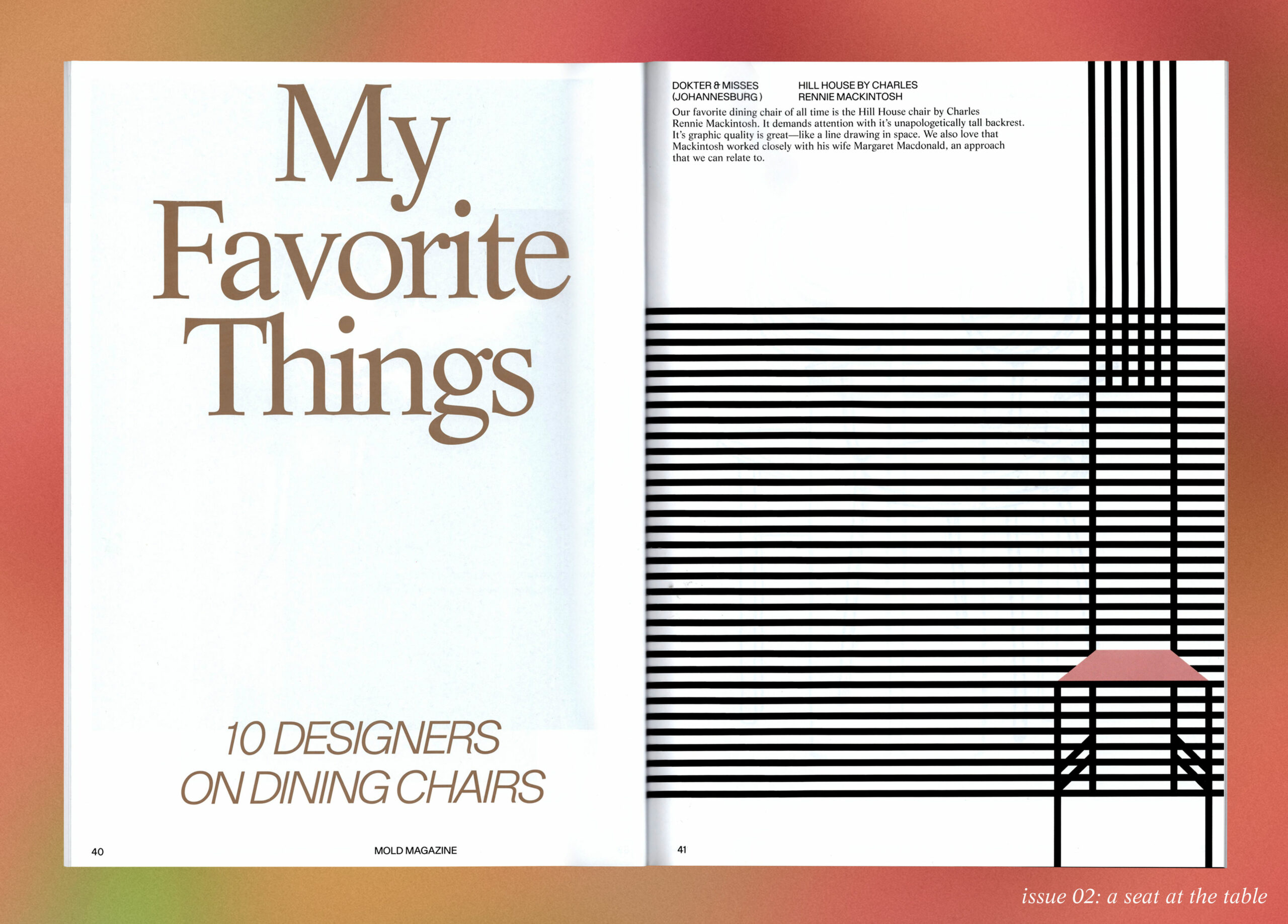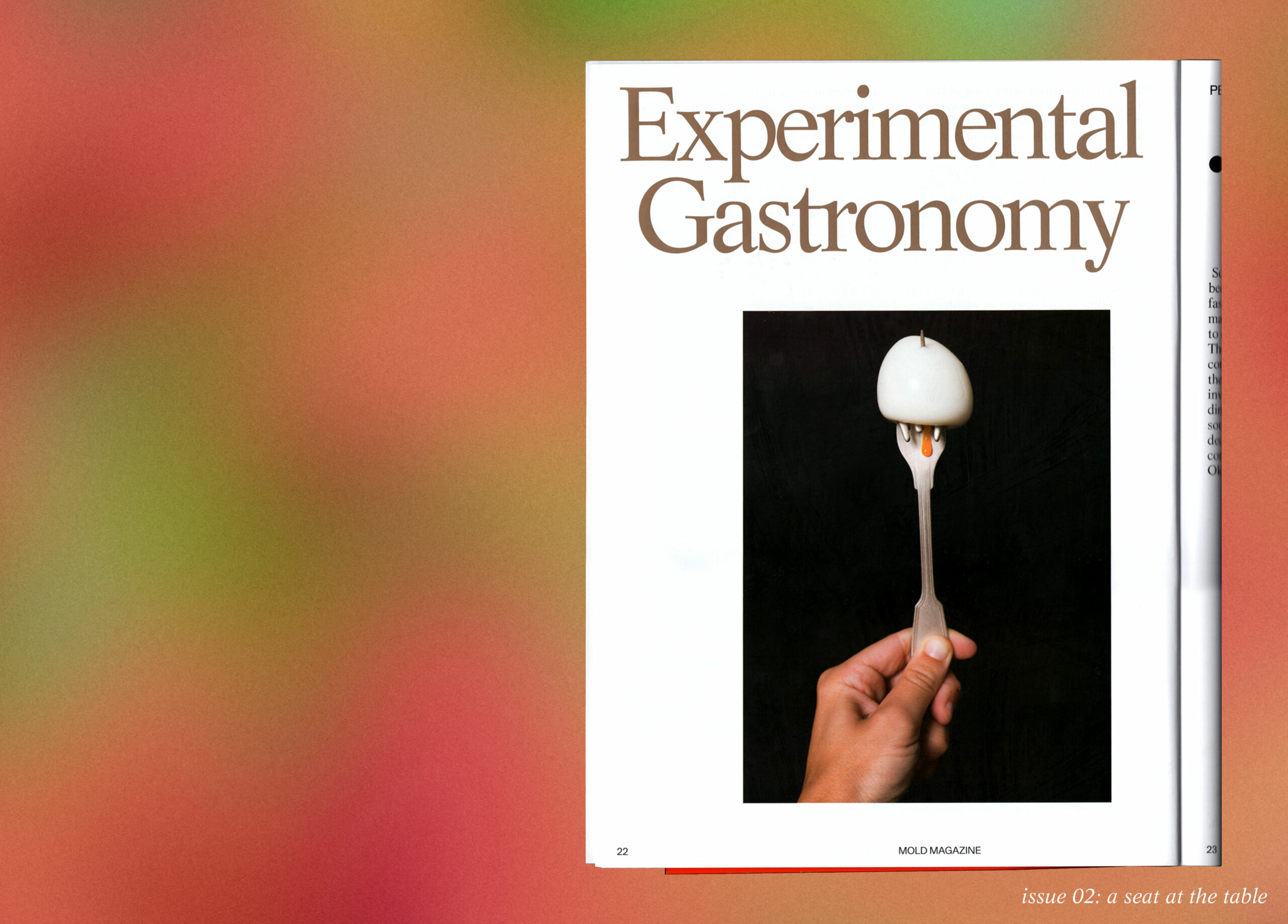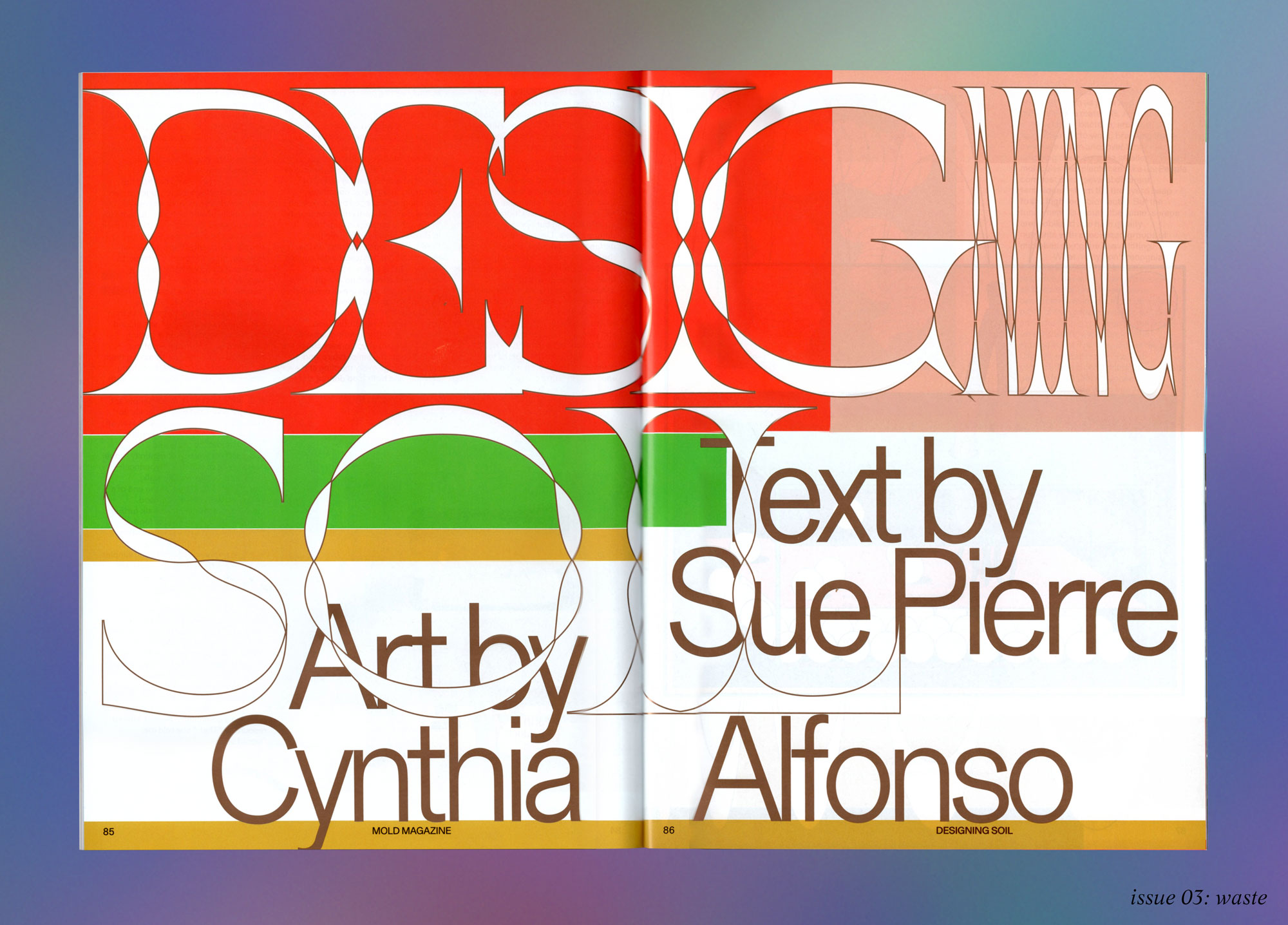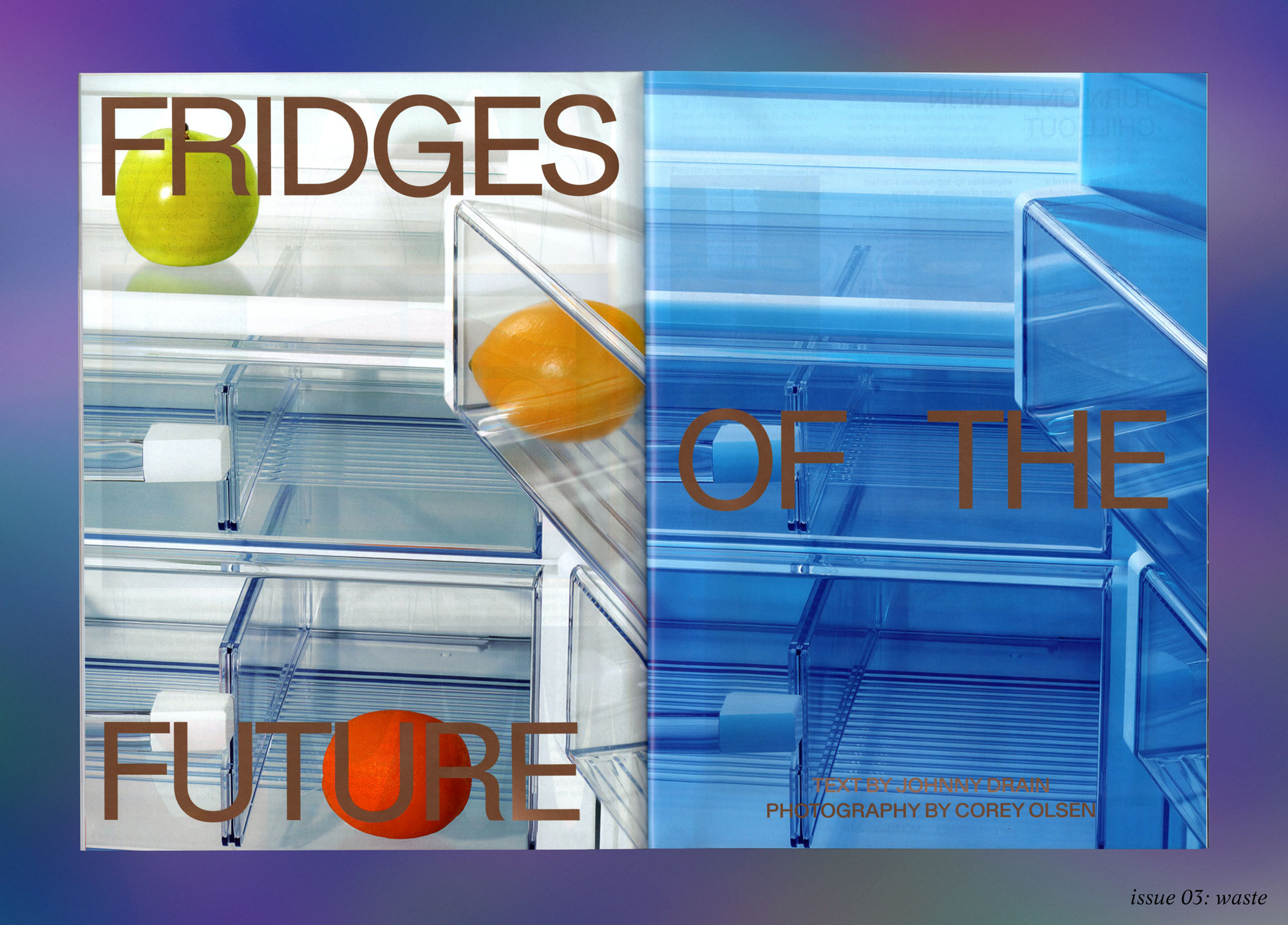This story is part of MOLD Magazine: Issue 04, Designing for the Senses. Order your limited edition issue here.
Looking through the lens of an interaction and material designer, I often ask myself several questions about food: can food see, hear, sense, evolve, compute, think and communicate? Can its structure be encoded, and can its behaviors and transformations be programmed? Can food become an active interface? Imagine the following examples:
Art by Maren Karlson. Additional images courtesy of Morphing Matter Lab.
- An edible timer: pasta that transforms from a flat object to a 3D form when it is cooked.
- An edible cooker: a school sandwich that warms itself when its two halves are placed together.
- An edible piano: carrots that play a melody as they are chopped.
- An edible camera: a lollipop that takes a picture of the teeth for oral inspection.
- An edible “pacer”: food that slows down the pace of your eating.
Floating Dumplings, Singing Bread
“Food is at once the stuff of life.”1 As an ancient medium, food is among the earliest forms of interaction we had with matter. Whether barbecuing meat or baking German rye bread, a cook can tell whether the food is perfectly cooked by changes in its shape, texture, color, smell, transparency and even sound. Food is a communicative medium: through its physical properties and behaviors, including these changes, it conveys information about, for example, its cooking state. My grandmother taught me that dumplings “told” her that they were done by swelling and floating to the top of the boiling pot. And when I took a short break from my graduate school at MIT and spent a summer at a bakery, my mentor in the bakery shop asked me to listen for the “bread singing” once it was taken from the oven.2 You can tell whether bread has the perfect crust just by hearing its song.
- 1. By Karen Boiko, lecturer from MIT Comparative Media Studies program.
- 2. The “singing” is due to the crust contracting as the bread cools. This occurs only when the crust is crisp. In contrast a soft crust is elastic enough to contract without making any sounds. As a result, the “singing” becomes a positive indication of the quality of the crust.
The dynamic transformation of material properties has been observed and mastered in the kitchen since the dawn of cookery. When a loaf of bread is baked, it undergoes a dramatic transformation in shape, color and stiffness. We embrace these transformations as they are symbols of good flavor. As part of their professional practices, cooks understand and utilize material transformation based on lessons learned from their accumulated life experiences. With their elasticity tunable by adjusting the amount of gluten in the flour, Xinjiang hand-pulled Uyghur noodles can be stretched multiple meters; utilizing the law of thermal expansion, a loaf of Indian phulka is increasingly inflated by hot air as it is moved around on a heated stove; and, as my grandmother wisely expressed, dumplings float on top of water due to the increased buoyancy that occurs when they expand, a signifier that they are ready.
Sadly, modern scientific farming and cooking methods increasingly rely on engineered machines, such as electronic thermometers and timers. Recipes have become precisely documented as if for a science lab with cooking temperatures and times controlled instrumentally by digital equipment such as sous vide machines.
Conversations with our food have been all but forgotten.
Talking Noodles and Dancing Teabags
I direct the Morphing Matter Lab at Carnegie Mellon University where we explore human interaction with adaptive matter. My students and I are very interested in exploring food as interactive media as it is a subject that connects the past and the future, science and the appetite, academia and daily life. I also believe in the potential of morphing food to be part of fine dining experiences and to prompt chefs to think about how flavor, color, shape and texture can be integrated to provide a holistic dining experience. Likewise, I think the dynamism in food can create interesting conversations between food and diners.
We developed pasta noodles that can be transformed at the dining table while being served—via a heating plate that can respond to stimuli such as music—providing a rich platform for diners to experience interactive information delivery. Such a platform allows people to communicate via their food. We imagine and demonstrate the following scenarios: a metal plate containing uncooked angel hair pasta is served to two diners. A violinist comes to the table and plays a song, “Salut d’Amour.” Upon sensing the sound, the heating table is activated and begins heating the plate. The pasta cooks on the heated plate and within five minutes, changes into a heart shape, conveying a message of love from the diner’s partner.
Just before I left MIT Media Lab, where I studied as a Ph.D. student, I designed a tea bag with my collaborators.3 A decorative leaf on top of the tea bag starts in a curled up position but slowly unfolds once hot water has been poured into the teacup. Once the tea is ready and the tea bag is ready to be pulled out of the cup, the leaf curls up again. The unfurling can be triggered by either the steam coming from the hot water or the capillary force—present whenever a liquid moves through a medium—that extends through the tea bag. Since we can control the length and timing of the capillary movement, the leaf’s furling action can precisely indicate the timing of when the tea is ready.
Shape-changing food has been gaining growing interest in the field of human-computer interaction (HCI). Many aspects of HCI’s contributions to shape-changing food (even though it is a passive reaction without a computational control loop) have been explored by our research community, including design tools for end users, customizability, environmental stimuli responsiveness and information display. But, if shape-changing foods are to be adopted as edible interfaces that can enrich people’s dining or cooking experiences, additional technical challenges remain to be solved such as tailoring their behaviors and properties to different use cases.
- 3. Lining Yao, Jifei Ou, Chin-Yi Cheng, Helene Steiner, Wen Wang, Guanyun Wang, and Hiroshi Ishii. 2015. bioLogic: Natto Cells as Nanoactuators for Shape Changing Interfaces. In Proceedings of the 33rd Annual ACM Conference on Human Factors in Computing Systems (CHI ’15). ACM, New York, NY, USA, 1-10.
Invisible Energy
One branch of morphing matter science concerns the interplay between energy dynamics and morphology of matter such as the bending of pine cone scales stimulated by rain and the shrinking of thermoplastic stimulated by heat.4 5 The kitchen is full of tools for the circulation of energy and materials for the transformation of matter. With the lens of science in the kitchen, a generalized material strategy to develop morphing food is amusing as well as tempting. Morphing food is a composite food material of which targeted properties vary in composition and structure over volume. The properties that can be varied include common physical properties such as elasticity, stiffness, thermal conductivity, optical refractive index and expansion rate, as well as food-specific properties such as taste and nutrition. If certain stimuli can trigger different material composites in morphing food to react differently, the global performance or behavior will change accordingly in a pre-programmed manner.
An example of using this material strategy is self-folding food.
- 4. Dawson, C., Vincent, J. F. V, & Rocca, A.-M. (1997). How pine cones open. Nature, 390, 668.
- 5. Byoungkwon An, Ye Tao, Jianzhe Gu, Tingyu Cheng, Xiang ‘Anthony’ Chen, Xiaoxiao Zhang, Wei Zhao, Youngwook Do, Shigeo Takahashi, Hsiang-Yun Wu, Teng Zhang, and Lining Yao. 2018. Thermorph: Democratizing 4D Printing of Self-Folding Materials and Interfaces. In Proceedings of the 2018 CHI Conference on Human Factors in Computing Systems (CHI ’18). ACM, New York, NY, USA, Paper 260.
At MIT Media Lab, one of the ways we have experimented with making food morph from a flat to a three-dimensional shape is to make a composite film where different regions have different swelling rates.6 For example, by drawing parallel lines of non-swelling cellulose fibers on top of a swelling film made of gelatin—depending on the density and thickness of the fibers—we can design a flat film that bends toward different orientations when hydrated. When we observe a small region of the composite film under a light microscope, we see that the cross-sectional area covered by the cellulose fibers swells more slowly than the region without them. Such morphing behaviors can be simulated, and predicted, in a computer too.
- 6. Wen Wang, Lining Yao, Teng Zhang, Chin-Yi Cheng, Daniel Levine, and Hiroshi Ishii. 2017. Transformative Appetite: Shape-Changing Food Transforms from 2D to 3D by Water Interaction through Cooking. In Proceedings of the 2017 CHI Conference on Human Factors in Computing Systems (CHI ’17). ACM, New York, NY, USA, 6123-6132.
Similarly, we produced a pure gelatin film that morphs in water by controlling how dense its vertical layers are. By preparing the film in a petri dish and evaporating water only from the top of the film, we found that once the top layer had dried a little, water evaporation in the lower layers slowed, resulting in a denser top layer and a looser, more porous bottom layer that has a comparatively lower expansion rate. The result? A film that bends downward when immersed in a water solution. We validated this hypothesis by using a scanning electron microscope to observe the microstructure of the film: the film’s top layer (a) can be seen to be much denser than the bottom layer (b).
Keen to investigate and diversify the flavor of our morphing food and obtain feedback from professional chefs, my colleague Wen and I visited one of the finest French restaurants in Boston, L’Espalier, where we started working with chef Matthew Delisle on a few morphing, cold noodle dishes using our edible gelatin films.
Chef Delisle provided us with three types of liquid: diluted squid ink, phytoplankton extract and tomato sauce, which we used instead of pure water when preparing the gelatin solution. The noodles were a success. Chef Delisle tasted the food and provided feedback on the flavor and feasibility of adopting such materials for his kitchen and strongly supported the idea of demonstrating the transformation process in front of his customers.
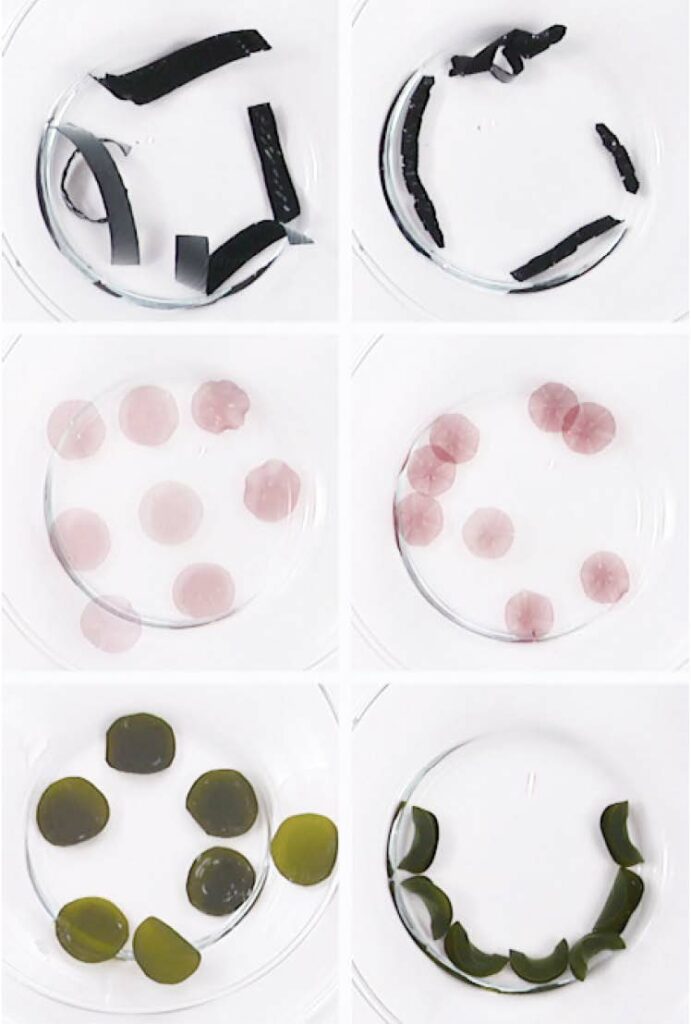
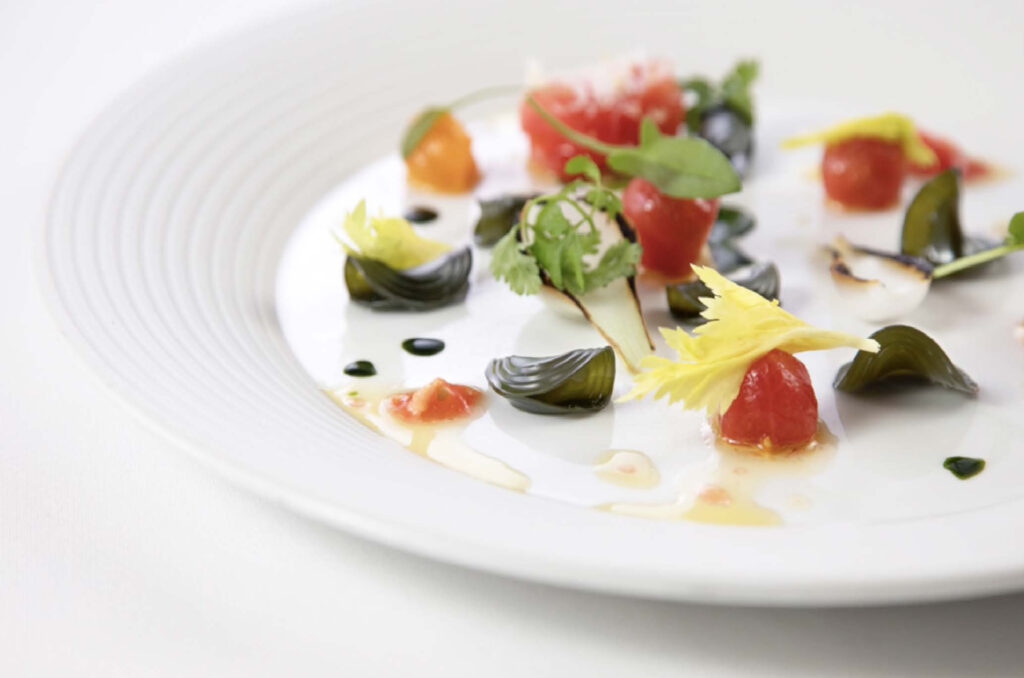
The Future of the Past
In the digital age, the conversation around the analog nature of physical matter and the materiality of food that is chip-free and instrument-free may seem out-of-date. However, I strongly believe that the material intelligence and responsiveness unveiled through the history of food, or the history of humanity, deserve more exploration empowered by modern material sciences and engineering. Food is one of the oldest media that human beings have used to communicate. At the Morphing Matter Lab, we are trying to leverage cutting-edge science and engineer food, an analog medium, with more precision, augment it with more meaning, and program it with more powers to entertain our appetite and enhance our experiences.
Acknowledgement
Some design examples covered in this article were financially supported by Carnegie Mellon University, Barilla Group, the MIT Media Lab and Food + Future. I thank my past co-authors including Prof. Hiroshi Ishii, Prof. Teng Zhang, Dr. Wen Wang, Chin-Yi Cheng, Daniel Levine, Jifei Ou, Helene Steiner, Dr. Guanyun Wang, Dr. Ye Tao, Youngwook Do, Humphrey Yang, Catherine Mondoa and Dr. Jianxun Cui.
